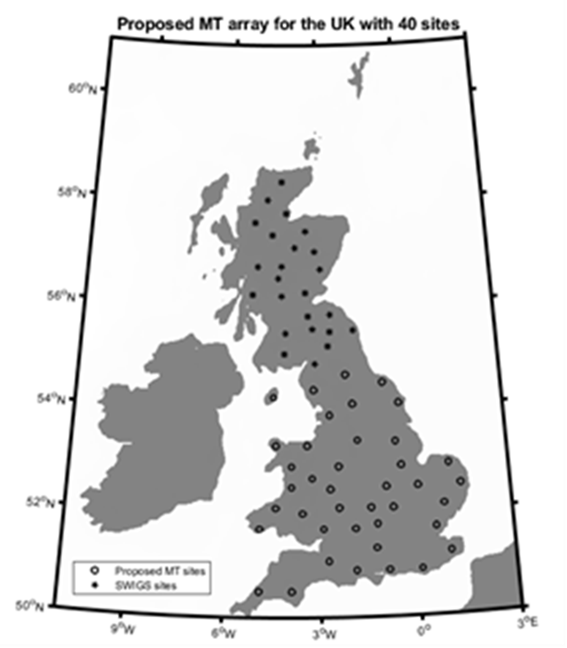SWIMMR Activities in Ground Effects (SAGE)
SAGE will provide now-cast and forecast data, through the Met Office, on potential space weather impacts on ground-level infrastructures in Britain. This system will be world-leading, by providing a forecast capability for the UK for the first time.
SAGE is led by BGS, together with project partners at British Antarctic Survey, Imperial College and University College London. We also have external collaborators at the Dublin Institute for Advanced Studies, Ireland, and Virginia Polytechnic Institute and State University, USA.
SAGE is one of eleven projects within the UKRI Strategic Priorities Fund Space Weather Instrumentation, Measurement, Modelling and Risk (SWIMMR) programme. The project started in June 2020 and runs through 2023.
SAGE is about turning cutting-edge scientific models into operational systems that run in real-time. These systems will deliver nowcast and forecast data on the potential ground-level impacts of space weather on critical national infrastructure (CNI), such as power and gas transmission systems and rail networks in Britain. SAGE builds on the science we have delivered under SWIGS. Within SAGE, the emphasis is however more on IT systems and delivery of products to the forecasters at the Met Office Space Weather Operations Centre (MOSWOC).
However, some key science, which was beyond the scope of SWIGS, is being carried out within SAGE. For example, we are extending the magnetotelluric survey of Britain, to include England and Wales.
We are also increasing the number of operational variometers monitoring magnetic storms in Britain and Ireland.
We are using Machine Learning to provide new contextual information for the MOSWOC forecasters, in addition to the physics-based and empirical models that are the backbone of the system.
- To provide accurate nowcasts and forecasts of the geomagnetic field and of the ground electric field across the UK, as the space weather source of power grid Geomagnetically Induced Currents (GIC), pipeline Pipe-to-Soil Potential (PSP), and rail network faults
- To make operational, at Met Office, new capabilities in now/forecasting of GIC, PSP and rail hazard by
- Operationalising computer models of the Earth's magnetic field response to space weather
- Coupling these magnetic models to ground conductivity models to compute the electric field
- Coupling the electric field to models of power and gas pipeline transmission networks, to compute GIC and PSP
- Developing a space weather rail hazard index from the now/forecast electric field
- Developing Machine Learning forecast products that provide contextual information alongside the deterministic products of a) to d)
- Delivering web-based displays, providing all SAGE space weather data products and information, relevant to power, pipeline and rail space weather hazards
Investigators
Principle Investigator: Dr Ciaran Beggan1
Co-Investigators: Prof Jeremy Chittenden3, Dr Jonathan Eastwood3,Dr Robert Shore2, Dr Mervyn Freeman2, Dr Colin Forsyth4, Dr Gemma Richardson1, Dr Andy Smith4
1. British Geological Survey, 2. British Antarctic Survey, 3. Imperial College London, 4. University College London
Contact
For more information please contact Dr Ciaran Beggan.

- Global Geomagnetic Models
- Space Weather and Geomagnetic Hazard
- High-frequency magnetometers
- Schumann Resonances
- Geoelectric field monitoring
- Space Weather Impact on Ground-based Systems (SWIGS)
- SWIMMR Activities in Ground Effects (SAGE)
- Geomagnetic Virtual Observatories
- Quantum magnetometers for space weather
- Magnetotellurics
- Publications List



